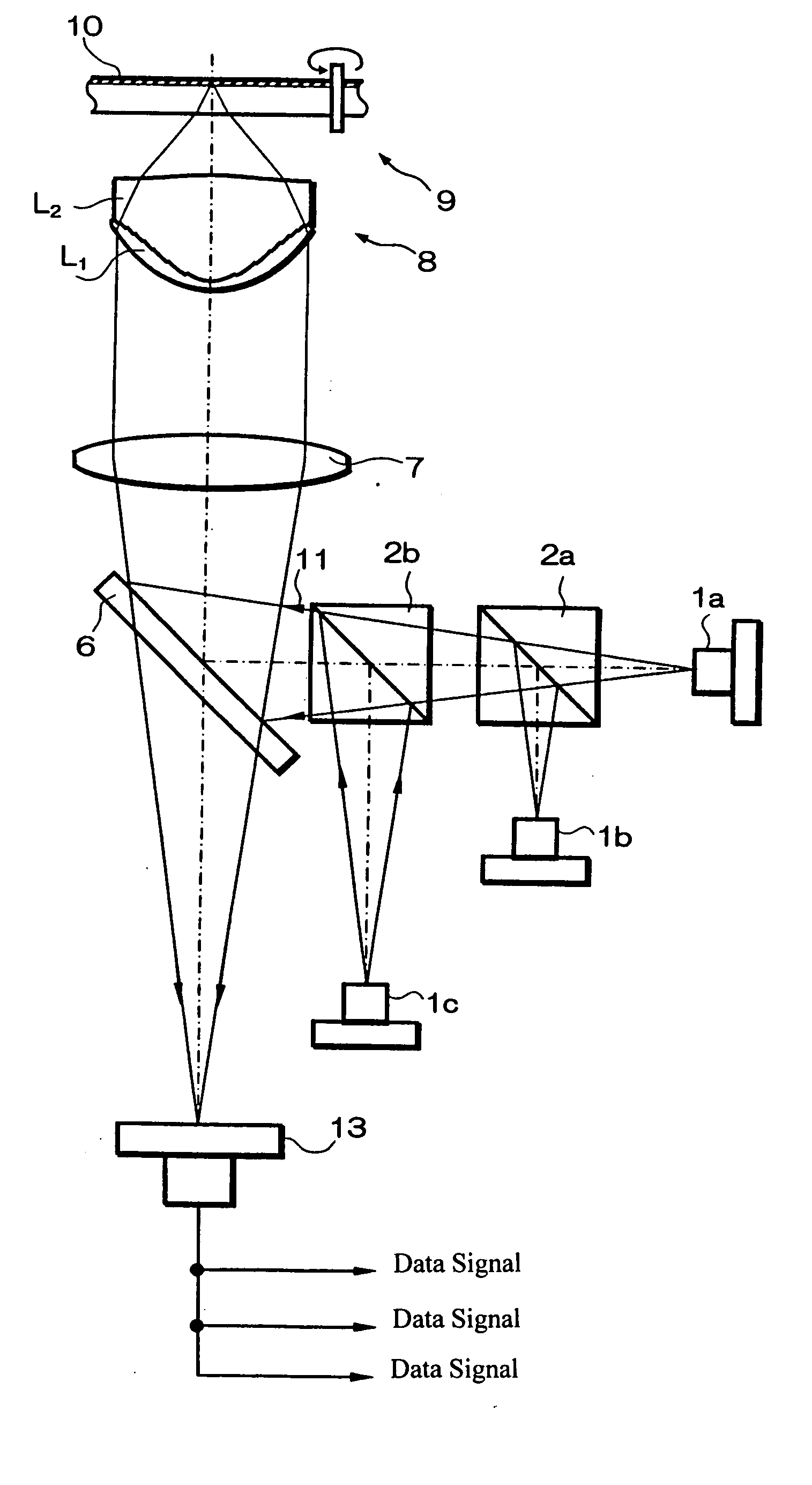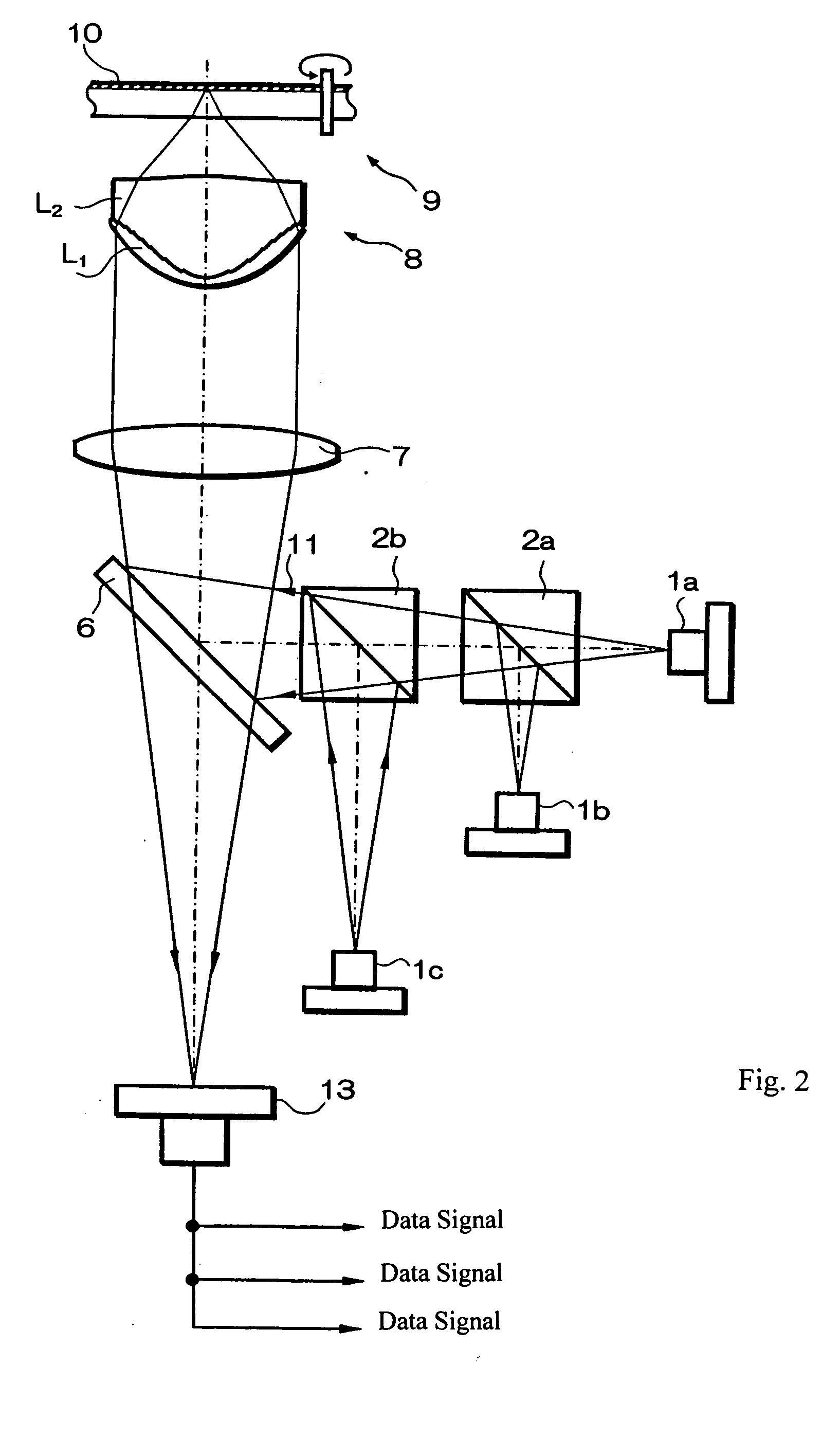Objective lens for optical recording media and optical pickup device using it
a technology which is applied in the field of optical recording media and optical pickup device using it, can solve the problems of increasing the amount of data that is handled in everyday life, increasing the amount of data that is available on optical recording media, and becoming urgent, so as to increase the freedom of selecting the position
- Summary
- Abstract
- Description
- Claims
- Application Information
AI Technical Summary
Benefits of technology
Problems solved by technology
Method used
Image
Examples
Embodiment Construction
The present invention relates to an objective lens for optical recording media, wherein the objective lens includes two lens elements of different materials that are cemented together. The cemented surface of the two lens elements includes a phase function Φ, as will be discussed in detail later, which results in the cemented surface being a optical diffractive surface that enables the objective lens to focus each of three different light beams of three different wavelengths, λ1, λ2, and λ3 to a different desired position for each of first, second and third optical recording media of thicknesses, d1, d2, and d3, respectively. The optical diffractive surface is designed so that each of the three light beams is controlled favorably to a desired focus position with the three light beams all being incident on the objective lens as substantially parallel light. By enabling all three light beams to be incident as parallel light, the freedom in positioning and adjusting the positions of t...
PUM
| Property | Measurement | Unit |
|---|---|---|
| wavelength | aaaaa | aaaaa |
| wavelength | aaaaa | aaaaa |
| thickness | aaaaa | aaaaa |
Abstract
Description
Claims
Application Information
 Login to View More
Login to View More - R&D Engineer
- R&D Manager
- IP Professional
- Industry Leading Data Capabilities
- Powerful AI technology
- Patent DNA Extraction
Browse by: Latest US Patents, China's latest patents, Technical Efficacy Thesaurus, Application Domain, Technology Topic, Popular Technical Reports.
© 2024 PatSnap. All rights reserved.Legal|Privacy policy|Modern Slavery Act Transparency Statement|Sitemap|About US| Contact US: help@patsnap.com










